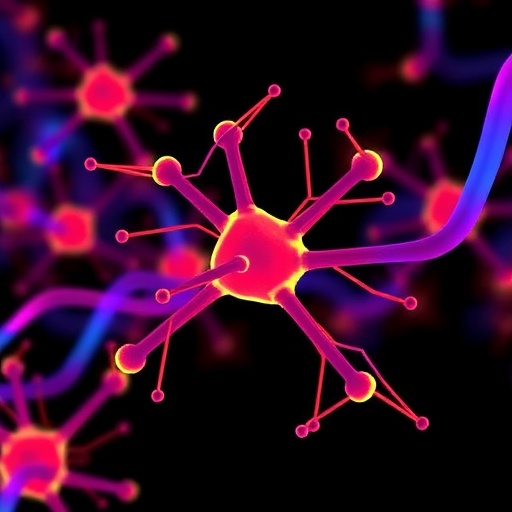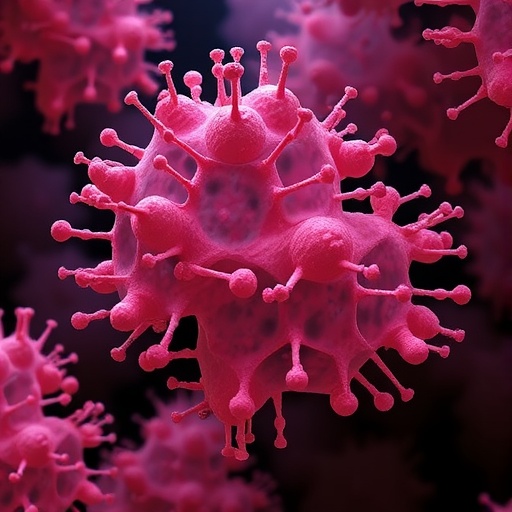In the ever-evolving field of neurobiology, one of the notable breakthroughs is the discovery of the antioxidant properties of stigmasterol, a naturally occurring phytosterol. Researchers have identified a critical connection between stigmasterol and the modulation of the Keap1/Nrf2 signaling pathway, particularly in the context of neurodegenerative disorders such as Parkinson’s disease. This discovery could have profound implications for those afflicted by the condition, offering potential therapeutic avenues that leverage the body’s intrinsic mechanisms of defense against oxidative stress.
Parkinson’s disease, a progressive neurodegenerative disorder characterized by motor and non-motor symptoms, has its roots deeply intertwined with oxidative stress and inflammation. The loss of dopaminergic neurons in the substantia nigra leads to the hallmark symptoms of tremors, rigidity, and bradykinesia. The accumulation of reactive oxygen species (ROS) has been implicated in the pathology of Parkinson’s, urging researchers to explore various antioxidants as potential therapeutic agents. The new study, spearheaded by Tong et al., provides compelling evidence that stigmasterol may act as a potent antioxidant, combating oxidative injury at a cellular level.
At the core of this research lies the Keap1/Nrf2 signaling pathway, a well-known regulator of the body’s antioxidant defense mechanisms. Under normal circumstances, the Kelch-like ECH-associated protein 1 (Keap1) tags Nrf2 for degradation. However, in the presence of oxidants, Keap1 is inhibited, allowing Nrf2 to translocate to the nucleus where it upregulates the expression of various cytoprotective genes. This study highlights how stigmasterol can activate the Keap1/Nrf2 pathway, enhancing the cellular antioxidant defense and ultimately providing neuroprotective effects against the degeneration seen in Parkinson’s disease.
The researchers conducted in vitro experiments using neuronal cell lines, where they exposed the cells to a model of oxidative stress. They found that stigmasterol treatment resulted in a significant decrease in markers of oxidative damage. Specifically, cellular assays indicated a reduction in lipid peroxides and an increase in the activity of endogenous antioxidant enzymes such as superoxide dismutase and catalase. This finding supports the hypothesis that stigmasterol not only quenches oxidative species but also enhances the body’s own antioxidant capacities.
Further investigations into the signaling events ignited by stigmasterol revealed a marked increase in the phosphorylation of certain kinases involved in the Nrf2 activation process. These early events set off a chain reaction that culminates in the robust activation of the Nrf2 pathway. As a result, genes encoding for critical antioxidant proteins were expressed at higher levels, further reinforcing the neuroprotective environment within treated neuronal cells. This multifaceted mechanism showcases stigmasterol’s potential; it not only serves as a direct scavenger of free radicals, but it also primes cellular defense systems for enhanced resilience against oxidative stress.
The role of phytosterols in human health has garnered significant interest over the past decades, particularly for their cardiovascular benefits and potential applications in inflammatory conditions. However, the exploration of stigmasterol’s neuroprotective properties remains largely uncharted territory until now. The findings of Tong et al. open the door for an exciting new avenue of research, suggesting that dietary sources of stigmasterol could play a role in modulating neurodegenerative diseases. Foods rich in stigmasterol include various nuts, seeds, and oils, offering avenues for dietary intervention to benefit brain health.
As this research paves the way for further studies, it emphasizes the need for more extensive clinical investigations to evaluate the efficacy of stigmasterol in real-world scenarios. While in vitro studies offer substantial insight, translating these findings into clinical practice requires rigorous trials and safety assessments. Patients diagnosed with Parkinson’s disease often endure a myriad of therapies with varying degrees of success; thus, the integration of stigmasterol as a therapeutic option could become a holistic approach, combining nutrition and pharmacology.
Moreover, the implications of this study stretch beyond Parkinson’s disease. Other neurodegenerative conditions, which also display oxidative stress pathways, might benefit from similar therapeutic approaches involving stigmasterol. Alzheimer’s disease, multiple sclerosis, and Huntington’s disease are just a few examples where the mechanisms of oxidative damage play a significant role. By understanding the versatile applications of stigmasterol, researchers can target a spectrum of neurodegenerative disorders.
The study also raises intriguing questions about the interplay between diet, lifestyle, and neurological health. As the population ages and cases of neurodegenerative diseases rise, the need for preventative strategies becomes increasingly evident. Encouraging dietary choices that are rich in natural antioxidants such as stigmasterol aligns with a growing trend toward preventive healthcare. This complementing relationship between nutrition and neurological function is a concept that could reshape public health recommendations in the years to come.
As the scientific community delves deeper into this promising field, it also necessitates interdisciplinary collaboration. Neurologists, nutritionists, and pharmacologists must work together to explore the breadth of stigmasterol’s effects, ensuring that their pathways and mechanisms are well understood. This research exemplifies how collective expertise can lead to a more comprehensive understanding of complex health issues and ultimately yield innovative strategies for treatment and prevention.
In summary, the exploration of stigmasterol as an antioxidant agent unveils the potential for novel therapeutic interventions in the realm of neurodegenerative diseases. The activation of the Keap1/Nrf2 signaling pathway serves as a critical mechanism through which stigmasterol exerts its beneficial effects, opening the door to further research and clinical applications. As more studies emerge, the hope is to carve a path toward improved therapeutic regimes that harness the power of naturally occurring compounds, offering patients new hope for managing conditions like Parkinson’s disease and beyond.
The wind of change in neuroprotective research seems to be blowing towards the incorporation of dietary elements like stigmasterol, offering a natural route that not only enhances health but allows individuals to take control of their wellbeing in the context of aging and neurodegeneration. With this vibrant blend of science and nutrition, the future holds promise for those grappling with the realities of neurodegenerative diseases.
Subject of Research: Stigmasterol’s antioxidant effects and its activation of the Keap1/Nrf2 signaling pathway in Parkinson’s disease.
Article Title: Stigmasterol exerts antioxidant effects through activation of the Keap1/Nrf2 signaling pathway in Parkinson’s disease model.
Article References:
Tong, Y., Qu, Q., Wan, Z. et al. Stigmasterol exerts antioxidant effects through activation of the Keap1/Nrf2 signaling pathway in Parkinson’s disease model. J Transl Med (2025). https://doi.org/10.1186/s12967-025-07502-2
Image Credits: AI Generated
DOI: 10.1186/s12967-025-07502-2
Keywords: Stigmasterol, Parkinson’s Disease, Antioxidant, Keap1/Nrf2 Signaling Pathway, Neuroprotection, Oxidative Stress.
Tags: antioxidant defense mechanismscellular oxidative injury protectiondopaminergic neuron lossneurobiology breakthroughsneurodegenerative disorders researchNrf2 signaling pathway activationoxidative stress and inflammationParkinson’s disease treatment optionsphytosterols in neurobiologyreactive oxygen species in Parkinson’sstigmasterol antioxidant propertiestherapeutic avenues for Parkinson’s





